We have much more to do and your continued support is needed now more than ever.
Baaj Nwaavjo I’tah Kukveni: Nearly 1 Million Acres of Ancestral Footprints of the Grand Canyon Safeguarded

On August 8, 2023, President Biden used the Antiquities Act to designate the Baaj Nwaavjo I’tah Kukveni – Ancestral Footprints of the Grand Canyon National Monument in northern Arizona. The sun was high in the sky when he signed the proclamation and permanently protected nearly 1 million acres of public land surrounding the nation’s iconic national park. Baaj Nwaavjo means “where tribes roam” for the Havasupai Tribe and I’tah Kukveni means “our footprints” for the Hopi Tribe.

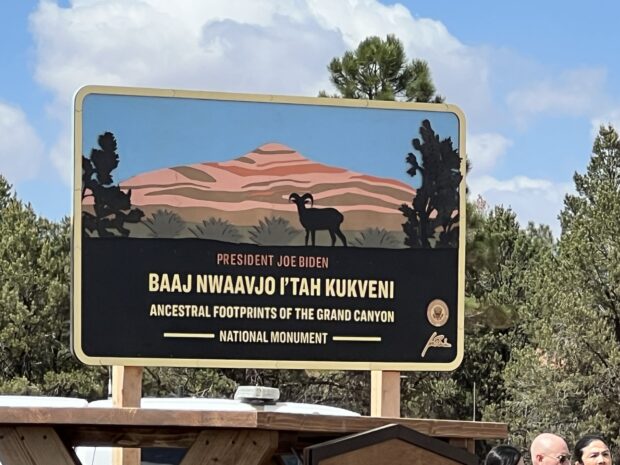
The monument resulted after years of advocacy by the Grand Canyon Tribal Coalition, which includes representatives of the Havasupai Tribe, Hopi Tribe, Moapa Band of Paiutes, Paiute Indian Tribe of Utah, Navajo Nation, San Juan Southern Paiute Tribe Yavapai-Apache Nation, Pueblo of Zuni, and the Colorado River Indian Tribes.
“We were given the responsibility to protect and preserve for those who are yet to come. We have a job to do. The rock writing tells us: protect this place, guard this place, this is your home.”
Rex Tilousi, Havasupai Elder
Indigenous People have stewarded these lands since time immemorial and the Tribes have actively gathered, danced and prayed for water and for future generations who will inherit this landscape.
The newly-designated monument includes Marble Canyon, the Echo and Vermilion cliffs, and the Havasupai’s sacred “Wii’i Gdwiisa” (Red Butte) mountain. Prior to the forced restriction of the Tribe into their canyon in the 1800s, the Havasupai hunted and gathered during winter around Red Butte. This is the place of emergence for the Havasupai, and for them, is a lung of Grandmother Canyon. Today, Red Butte is federally recognized as a traditional cultural property, and the summit can be reached by a short but steep trail.

“For Hopi, it’s our place of emergence, a place that we still hold pilgrimages and offerings. It’s what we consider the heartbeat. Much like a human being, the waterways are arteries and veins carrying that lifeblood, not only to Arizona, but the entire world. It keeps life going. And if we poison that blood, life dies.”
Timothy Nuvangyaoma, chairman of the Hopi Tribe
The Threat of Uranium Mining
Unfortunately, these lands also bear the scars of toxic uranium mining that has plagued Indigenous communities with persistent negative health impacts from that legacy. More than 500 abandoned uranium mines are scattered across the region, impacting freshwater sources for local populations and seeping contaminated water into the Colorado River and other water bodies over great distances. Springs are indicators of aquifer integrity.
According to a recent U.S. Geological Survey report, 15 springs and five wells in Grand Canyon watersheds occur near uranium mines and have dissolved uranium concentrations that exceed safe drinking water standards. Both the ecological importance of springs as keystone ecosystems and the level of ecological impairment of springs are especially great in arid regions, with 70-90% of springs in the lands surrounding the Grand Canyon ecologically impaired or devastated.
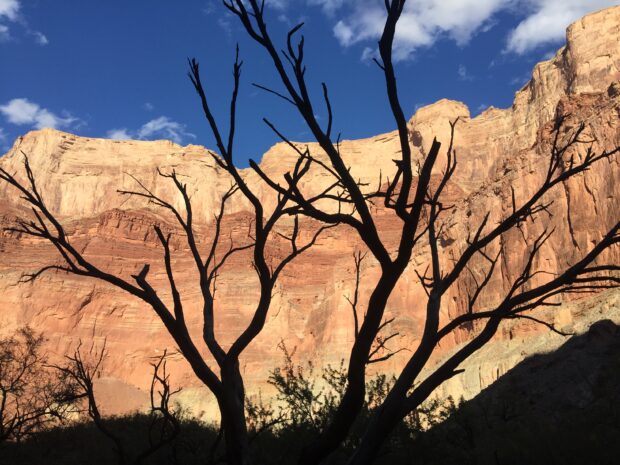
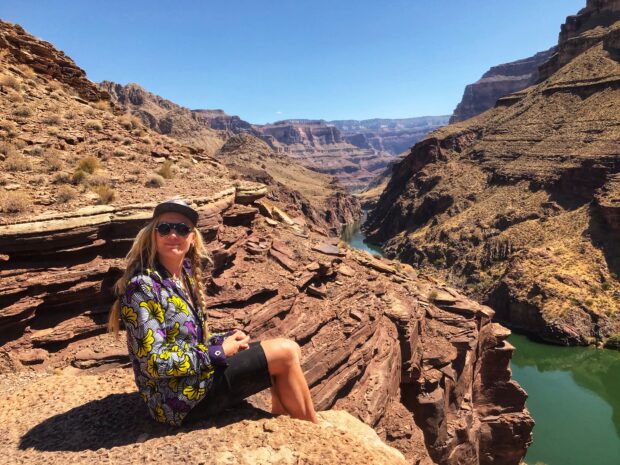
It is the threat of uranium mining that spurred the Grand Canyon Tribal Coalition, community leaders, conservationists, hunters, anglers, and outdoor recreationists to come together to rally to protect these sacred lands and waters. It was also one of the reasons that I decided two years ago to step away from guiding multiday river expeditions full-time in the Grand Canyon and play a larger role in protecting it. The transition from guiding 250 days a year to rowing a desk 40 hours a week for the National Wildlife Federation has been an adjustment, but on days like the day President Biden named this new national monument, it feels incredibly rewarding and I’m proud of the small role that I helped play in securing these protections.
Our Role in Meetings at the White House
Just two months ago, I flew to Washington, D.C. to join my colleagues at the Arizona Wildlife Federation and other Arizona conservation groups to urge officials with the Biden Administration to permanently protect the critical lands, water supplies, wildlife, and cultural and religious sites that surround the Grand Canyon. We came on behalf of a much larger group of local elected officials, sporting groups, military veterans, recreationists, guides, conservationists, and local and national businesses. It was an honor to officially represent Grand Canyon River Guides Association alongside Grand Canyon Trust, Trout Unlimited, HECHO, Chispa AZ, Coconino County, and the Arizona Faith Network.
We each brought a unique perspective and had the opportunity to elaborate on why we felt strongly about permanent protections. My focus was on the recreational economics and springs hydrology of the Colorado River; I used science-based data, pictures, and tribal art to impress upon the audience the importance of protecting this landscape to the nation. I shared that I have relied on my income from guiding for over a decade, as well as my first-hand knowledge of many small businesses associated with commercial river trips and outfitters.
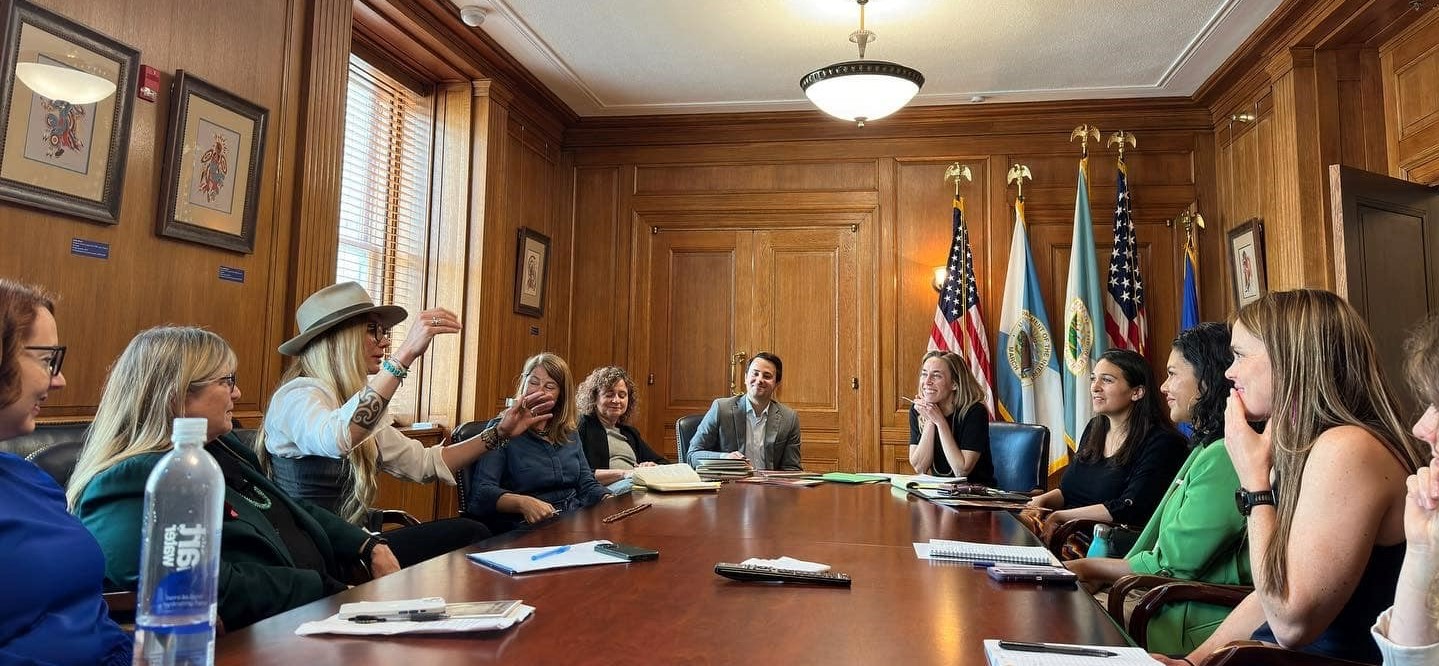
After several days of back-to-back meetings, our coalition hit our stride when we spoke at the Department of the Interior. After I spoke, the Deputy Chief of Staff for Policy said she wanted to go rafting with me. I smiled and promptly responded, “Yes, the rapids in the Grand Canyon are RAD, but the springs are the most important destinations we share with river runners, and if they get contaminated, it’s not feasible.” My river guide lingo produced a round of laughter – and it was perhaps the first time the word “rad” had been used at such a formal meeting in the halls of Washington.
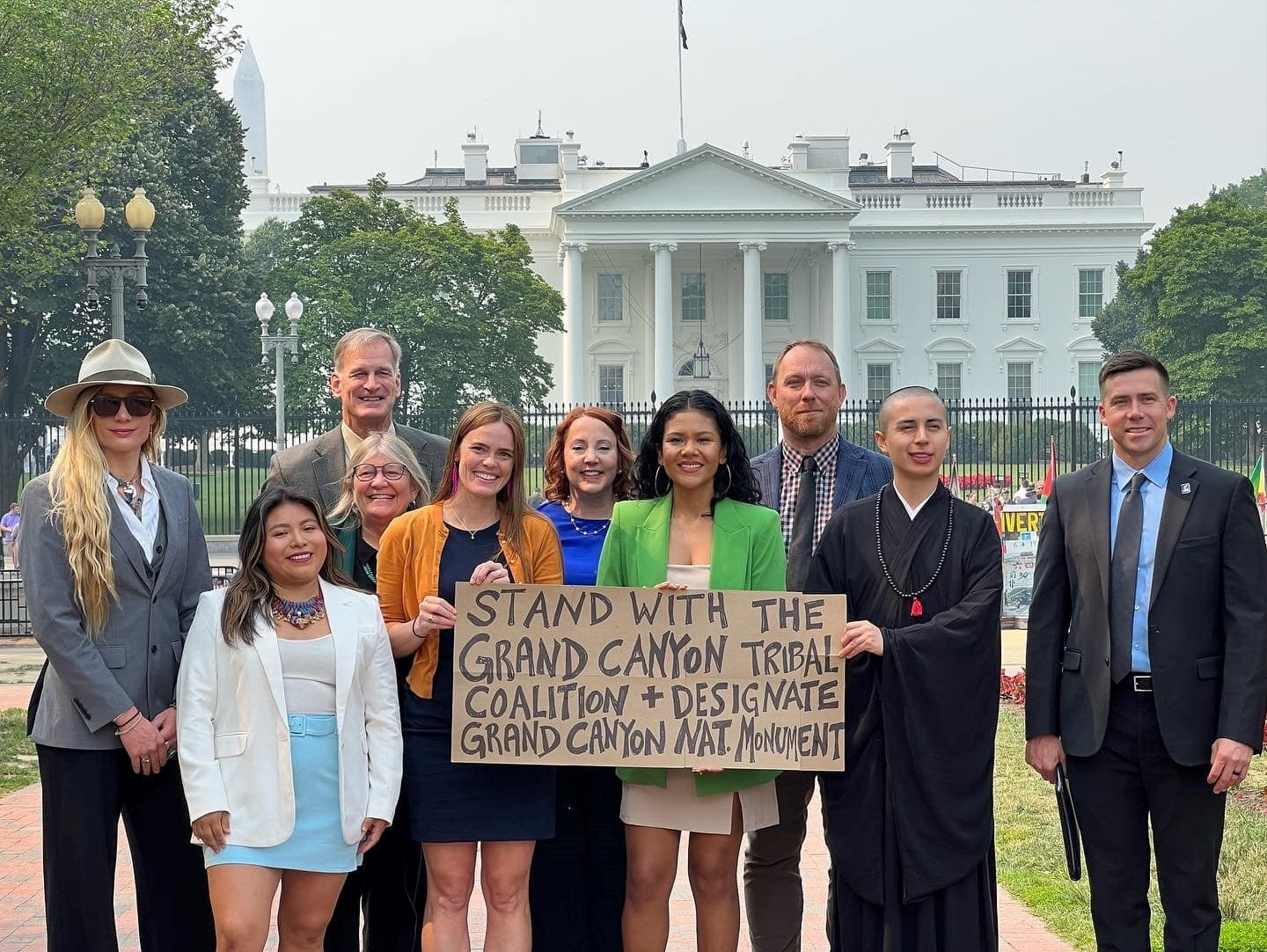
The entire trip to D.C. was life changing for me. It was inspiring to take part in White House meetings and to observe other U.S. citizens walking the corridors advocating for various issues. I hope all Americans realize that this doesn’t happen in every country, and that participating in the democratic process is part of what makes our nation strong. It’s also important to realize that our vast public lands are also unique and worthy of protection. I’m proud that President Biden listened to Indigenous leaders, community activists and conservationists to develop a balanced and reasonable designation that assures that the Grand Canyon watershed will be safeguarded for generations to come.
Mandela van Eeden has been an international adventure guide around the world for 18 years. She is the host of the podcast, The Trail Less Traveled, and she is a communications coordinator for the National Wildlife Federation.





















